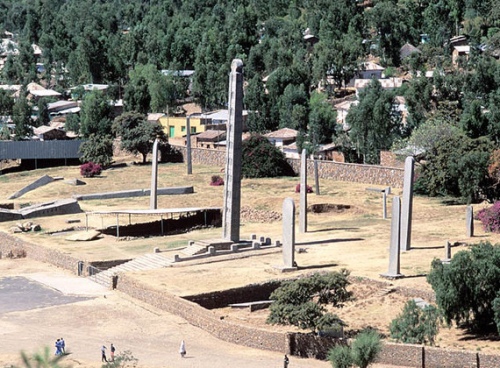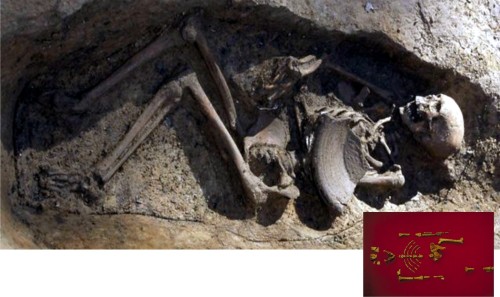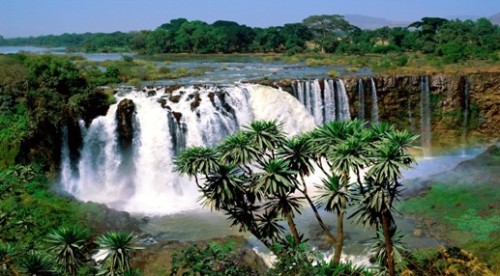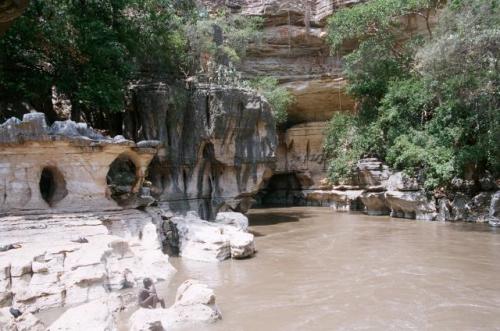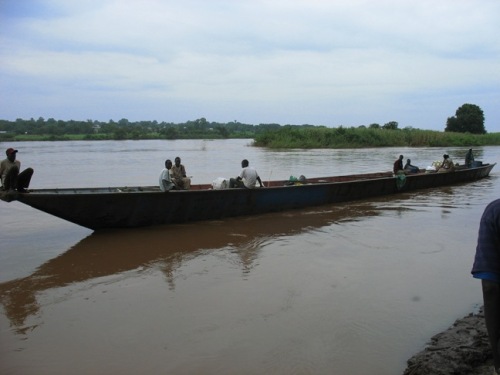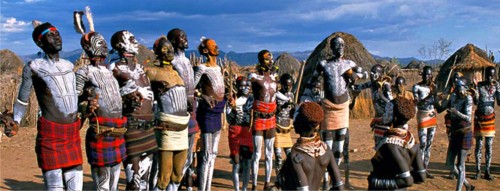ETHIOPIA’S uniqueness makes it a fascinating destination for every kind of traveller. It has been an independent nation since ancient times, being one of the oldest countries in the world. A monarchy for most of its history, the Ethiopian dynasty traces its roots to the 2nd Century BC. Ethiopia is also one of the oldest sites of human existence known to scientists today, having yielded some of humanity’s oldest traces.
The country is a land of natural contrasts, with spectacular waterfalls and volcanic hot springs. Ethiopia has some of Africa’s highest mountains as well as some of the world’s lowest points below sea level.
Ethiopia has the most number of UNESCO World Heritage Sites in Africa and the country is famous for its Olympic distance athletes, rock-hewn churches and as the origin of the coffee bean.
* There are 13 months in the Ethiopian Calendar. Twelve months have 30 days each and the thirteenth month has only five or six. A seven-to-eight-year gap between the Ethiopian and Gregorian calendars results from alternate calculations in determining the date of the Annunciation of Jesus. The current year according to the Ethiopian calendar is 2002, which began on 11 September 2009 AD of the Gregorian calendar. The year 2003 will begin on 11 September 2010.
HISTORIC ETHIOPIA
Many people visit Ethiopia because of the remarkable manner in which ancient historical traditions have been preserved. Some of the ceremonies and rituals of the Ethiopian Orthodox Church open a window on the authentic world of the Old Testament. The past comes alive in the fascinating land in the form of strange and beautiful monuments and ruins, built long centuries ago.
AXUM
Axum is the site of Ethiopia’s most ancient city and is renowned for the Cathedral of St. Mary of Zion, where legends say the original Ark of the Covenant is housed.
Axum is also famous for its seven mysterious monolithic stelae (a stone slab, generally taller than it is wide, erected for funerals or commemorative purposes), carved from single pieces of granite and with identical decorations. The largest of them is 33 metres high and weighs over 500 tons. At one point, it was the largest monolith in the world. Axum monolithic stelaes have been registered by UNESCO as a world heritage site.
LALIBELA
Once the thriving capital of a medieval dynasty, Lalibela is internationally renowned for its rock-hewn churches which are sometimes called the Eighth Wonder of the World. Carved out of the rock in which they stand, these towering edifices seem to be of superhuman creation in scale, workmanship and concept.
GONDAR
Emperor Fasilides founded Gondar as his capital in 1636. It is the site of numerous castle-like palaces dating from the 17th and 18th Centuries. The city was Ethiopia’s capital until 1855. During the long years when it was a capital, the settlement emerged as one of the largest and most populous cities in the realm. The oldest and the most impressive of Gondar’s many imperial structures is the palace of Emperor Fasilides. There are also numerous other fascinating historical buildings and relics, the most spectacular being Debre Berhan Selassie Church.
YEHA
Located in the administrative region of Tigray and about a 90-minute drive from the ancient city of Axum, Yeha is set amid imposing mountain scenery and is possibly Ethiopia’s oldest major settlement. It is the site of the Ethiopia’s most ancient temple and oldest standing structure, as well as a richly endowed Ethiopian church of more modern times.
ARCHAEOLOGICAL ETHIOPIA
Ethiopia is the earliest known home of humankind. A skeleton of an older human ancestor Australopithecus Afarensis was discovered in 1974 in the Afar region.
Anthropologists have established that the skeleton belonged to a twenty-year-old female that lived 3.5 million years ago. Registered by UNESCO as a World Heritage Site, the location of the discovery is called Hadar, situated 160 kilometres northeast of Addis Ababa.
The skeleton is popularly known as Lucy or Dinkinesh. The discovery has completed the missing link between apes and men – paving the way for the search to human origins.
Later, in 1999, Selam (Lucy’s baby) – most complete skeletons, dated to around 3.31 – 3.35 million years old, was found by an Ethiopian scientist, Zeray Alemseged.
NATURAL ETHIOPIA
From the tops of the rugged Simien Mountains to the depths of the Danakil Depression at 120 metres below sea level, Ethiopia offers a magnificently varied natural landscape.
Afro-Alpine highlands soaring to 4300 metres, moors and mountains, the splendour of the Great Rift Valley, white-water rivers, Savannah teeming with game, giant waterfalls, dense and lush jungle are all just selection from an endless list of natural wonders.
OMO VALLEY
Reckoned by enthusiasts to the one of Africa’s premier locations for white-water rafting, the Omo River’s early fury takes it through gorges hundreds of metres deep alongside fish, crocodiles and hippos.
On the final leg of the journey south to Turkana, the Omo forms the border between Kefa and Gamo Gofa provinces. It is here that Ethiopia’s largest nature sanctuary, the Omo National Park – one of the richest in spectacle and game and yet one of the least visited areas in East and Central Africa – is located.
The Mago National Park has been established on the eastern bank of the river; a land of endless, distant horizons. Most easily reached from the town of Jinka, Mago National Park is mainly savannah, with some forested areas around the rivers. It was set up to conserve the large numbers of animals in the area. The parks are extensive wilderness areas and wildlife can be prolific. The birds are also typical of the dry grassland habitat, featuring bustards, hornbills, weavers and starlings.
AWASH NATIONAL PARK
Lying in the lowlands east of Addis Ababa and striding the Awash River, the Awash National Park is one of the finest reserves in Ethiopia. The dramatic Awash Falls – as the river tumbles into its gorge – is a site not to be missed in the national park. A special attraction is the beautiful clear pools of the hot springs.
Awash National Park, surrounding the dormant volcano of Fentale, is a reserve of arid and semiarid woodland and savannah with forests along the Awash River. Forty-six species of animals have been identified here. The bird life is prolific especially along the river and in amongst the 392 species of native birds recorded.
SOF OMAR
Sof Omar, not far from the Bale Mountains, is the site of one of the world’s most spectacular and extensive underground caverns. Formed by the Weyib River as it changed its course in the distant past and carved a new channel through limestone foothills, Sof Omar is an extraordinary natural phenomenon of breathtaking beauty. At 15.1 kilometres long, Sof Omar Cave is the longest cave in Ethiopia.
Visitors to Sof Omar make their way far into the bowels of the Earth, beside a subterranean stream, where one can see an extraordinary number of arched portals, high, eroded ceilings and deep, echoing chambers.
SIMIEN MOUNTAINS NATIONAL PARK
The Simien Mountain massif is a broad plateau, cut off to the north and west by an enormous single crag over 60 kilometres long. To the south, the tableland slopes gently down to 2200 metres, divided by gorges 1000 metres deep which can take more than two days to cross. Insufficient geological time has elapsed to smooth the contours of the crags and buttresses of hardened basalt.
Within this spectacular splendor live the Walia (Abyssinian) ibex, Simien red fox and Gelada baboon – all endemic to Ethiopia – as well as the Hamadryas baboon, klipspringer and bushbuck. Birds such as the lammergeyer, augur buzzard, Verreaux’s eagle, kestrel and falcon also soar above this mountain retreat.
Twenty kilometers north-east of Gondar, the Simien Mountains National Park covers 179 square kilometres of highland area at an average elevation of 3300 metres. Ras Dashen, at 4620 metres the highest peak in Ethiopia, stands adjacent to the park.
BALE MOUNTAINS NATIONAL PARK
The Bale Mountains, with their vast moorlands – the lower reaches covered with St. John’s wort- and their extensive heathland, virgin woodlands, pristine mountain streams and alpine climate remain an untouched and beautiful world. Rising to a height of more than 4000 metres, the range borders Ethiopia’s southern highlands, whose highest peak, Mount Tullu Deemtu, stands at 4377 metres.
The establishment of the 2400-square-kilometre Bale Mountains National Park was crucial to the survival of the mountain nyala, Menelik’s bushbuck and the Simien red fox. This fox is one of the most colorful members of the dog family and more abundant here than anywhere else in Ethiopia. All three endemic animals thrive in this environment, the nyala in particular often being seen in large numbers. The Bale Mountains offer some fine high-altitude horse and foot trekking, and the streams of the park – which become important rivers further downstream – are well-stocked with rainbow and brown trout.
GAMBELA NATIONAL PARK
The Baro River area, accessible by land or air through the western Ethiopian town of Gambela, remains a place of adventure and challenge. Traveling across the endless undulating plains of high grass, visitors can enjoy a sense of achievement in just finding their way. This is Ethiopia’s true tropical zone and here is found all the elements of the African safari, enhanced by a distinctly Ethiopian flavor.
Nile perch weighing 100 kilograms can be caught in the waters of the Baro, snatched from the jaws of the huge crocodiles that thrive along the riverbank. The white-eared kob also haunts the Baro, along with other riverbank residents that include the Nile lechwe, buffalo, giraffe, tiang, waterbuck, roan antelope, zebra, bushbuck, Abyssinian reedbuck, warthog, hartebeest, lion, elephant and hippopotamus.
CULTURAL ETHIOPIA
Ethiopia has culture and traditions dating back over 3000 years and over 80 different ethnic groups with their own language, culture and traditions. The strong religious setting, celebrations and festivals play an important part in every ones daily life.
HARAR
Harar is located 523 kilometres east of Addis Ababa. The most dominant features of Harar are its strong encircling walls, its rich and exciting market place – probably the most colourful in Ethiopia – its 99 mosques and the fully restored Rimbaud’s House named after the eccentric French poet. Harar has managed to retain its medieval character, charm and glory and is now a fascinating stopover for the traveller.
MEKELE
Mekele is famous for its rock-hewn churches, of which there are approximately 200 in the region. These churches are beautifully decorated and house important religious artefacts.
DEBRE MARKOS
Debre Markos is located 305 kilometres north of Addis Ababa. Here you will find the 19th Century
Church of Markos (St. Mark), with its pale but beautiful paintings depicting scenes of biblical and religious history.
BAHIR DAR
Bahir Dar, located 560 kilometres from Addis Ababa, is located on the southern shores of Lake Tana, the source of the Blue Nile, with its ancient island monastries and the spectacular Blue Nile Falls. On the island of Dega Estefanos you will find the church of St. Estefanos which has a priceless collection of icons and manuscripts and houses the mummified remains of a number of Ethiopian emperors.
OMO VALLEY
The Lower Omo is home to a remarkable mix of small, contrasting ethnic groups not only the Bume and Konso, but also the Gelebe, the Bodi, the Mursi, the Surma, the Arbore, and the Hamer, to name but a few. Lifestyles are as varied as the tribes themselves. Lacking any material, culture and artifacts common to other cultures, these tribes find unique ways in which to express their artistic impulses. Both the Surma and the Karo, for example, are experts at body painting, using clays and locally available vegetable pigments to trace fantastic patterns on each other’s faces, chests, arms, and legs. These designs are created purely for fun and aesthetic effect, each artist vying to outdo their fellows.
ARBAMINCH
Arbaminch is well known for its large number and variety of wildlife, species endemic birds and natural beauty of the landscape. Drive Southeast of Addis Ababa passing through Debre Zeit and continue driving along the main road of the Great Rift Valley which leads you to the South along the shores of many of the lakes.
Not very far from Arbaminch, in the moutains, live the Omotic Dorze people. They are famous for their houses which are constructed with vertical hard wood poles and woven bamboo. It can be 10 metres high. The house is divided in to a fireplace, cattle place and bedroom.
LANGANO
Langano is located 200 kilometres south of Addis Ababa. It is a sand beach that attracts many visitors. Along the road to Langano, one can see beautiful landscapes. As you continue driving, the first lake to be seen among the rift valley lakes is Lake Zeway. It is a shelter for a variety of birds and fish. Proceeding further to the South, Lake Abiyata and Lake Shala can be reached. These lakes are breeding places for Flamingos and ideal for bird watching. Nearby is Lake Langano, a resort area and a paradise for holidaymakers. Traditions for most vacationers include setting up tents along the beach, eating (fresh-meat) barbeque.
SODERE
Sodere is situated 126 kilometres southeast of Addis Ababa. It is a very popular resort area with new hotel complexes. The Olympic size pool and physiotherapy centres are frequented by visitors of all ages. The vegetation of Sodere and its vicinity is evergreen, healthy and scenic. Nearby, the Awash River meanders through the forest that forms giant shade trees.



